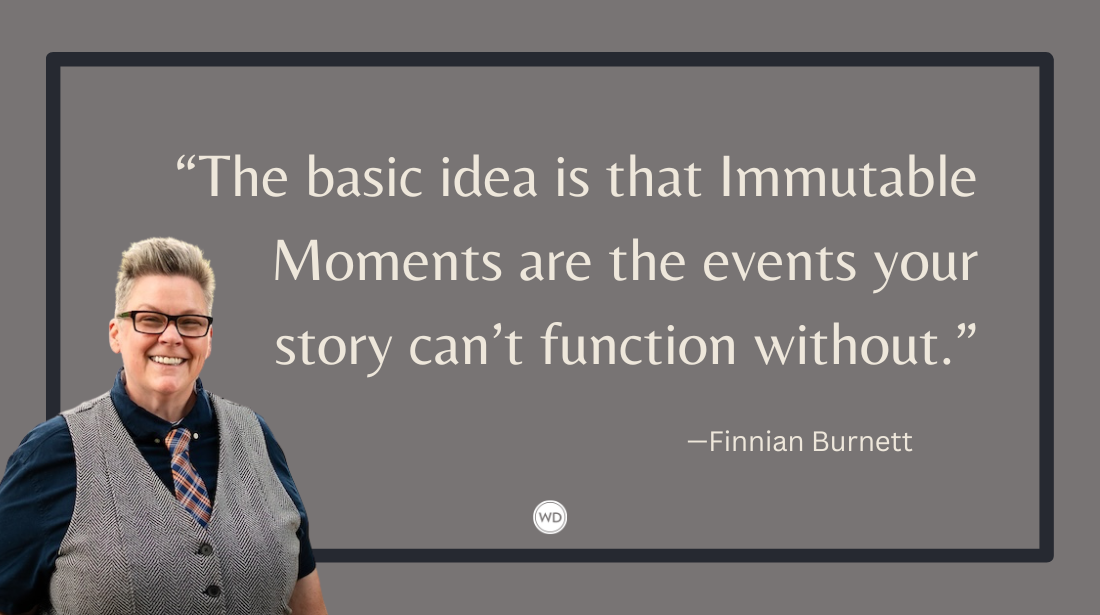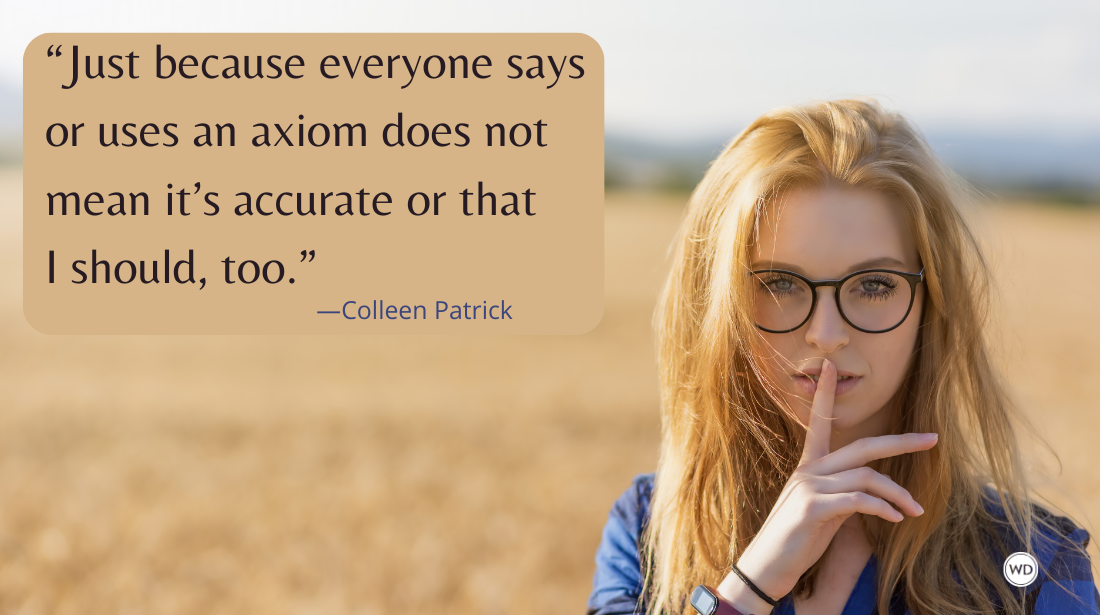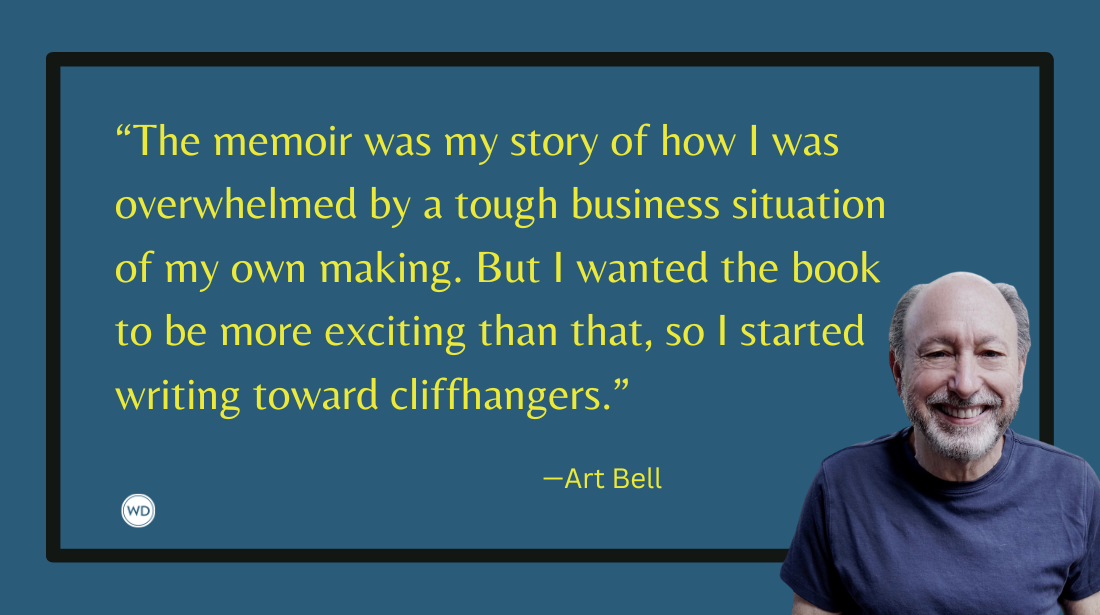Writing Mistakes Writers Make: Omitting Sensory Details
The Writer’s Digest team has witnessed many writing mistakes over the years, so we started this series to help identify them for other writers (along with correction strategies). This week’s writing mistake writers make is omitting sensory details.
Everyone makes mistakes—even writers—but that's okay because each mistake is a great learning opportunity. The Writer's Digest team has witnessed many mistakes over the years, so we started this series to help identify them early in the process. Note: The mistakes in this series aren't focused on grammar rules, though we offer help in that area as well.
Rather, we're looking at bigger picture mistakes and mishaps, including the error of using too much exposition, neglecting research, or researching too much. This week's writing mistake writers make is omitting sensory details.
Writing Mistakes Writers Make: Omitting Sensory Details
“Show, don’t tell” is probably one of the most popular pieces of writing advice; you probably heard it first in a classroom somewhere in your middle or high school years. It’s so popular because it’s good advice—you want your readers to experience the story rather than sit there feeling like they’re presented with a to-do list that your characters are checking off.
Here’s an example of a passage where I’ve told instead of shown:
Sarah stared down at her plate while her father chatted in the background. The food was unappealing. She wished her mom was still around.
It’s not the most interesting passage, is it? This exemplifies that, yes, the “show, don’t tell” advice is sound, but how does one go about implementing it? This part isn’t always so clear-cut. But one of the best ways to ensure that you’re showing the reader your world instead of simply telling them about it is to engage their senses.
Mistake Fix: Get Back to Basics
Sight
This is probably the sense that is the hardest to get right since when you tell the reader what the character is seeing, it’s very similar to showing it to them. However, to flesh out your world, you want to make sure that you’re giving the reader detail, not just a laundry list of what’s in the room.
Let’s go back to the passage I used as an example earlier:
Sarah stared down at her plate while her father chatted in the background. The food was unappealing. She wished her mom was still around.
Here, our narrator is telling us what they see, but it’s reading kind of flat. Why? We’re missing Sarah’s perspective. The key is to remember that we’re not seeing things through an impartial lens; it’s being filtered through your narrator. What your narrator notices and the way they react to what they notice is what will make your description more dynamic.
So, let’s take that passage and filter it through our narrator:
Sarah stared down at her plate while her father chatted in the background. The pancakes were thick and hard, the syrup puddling around the stack without soaking into the sponge. She had a sudden vision of greasy eggs with the yolk burst open, fresh, buttery toast, and bacon that was just a little crispy around the edges. She wished her mom was still around.
In this passage, we learn quite a bit about the subject, but also about our narrator. Her mother is no longer in the picture and she’s missing how things used to be; her father is regulated to the back of her attention. These small details are important because you can use them later to further your plot.
Sound
Sound is tricky because it needs to be used sparingly. Think of all of the sounds that you tune out during your day; not every sound is worth noting down in your writing, either. However, sound (and even the absence of sound) can be used in ways to help you flesh out your scene.
Let’s expand our passage further:
Sarah stared down at her plate.
“I was thinking we could go to the park later,” her dad said. His voice was still rough from getting too little sleep after his late shift. It still sounded too loud in the silence of the kitchen.
The pancakes were thick and hard, the syrup puddling around the stack without soaking into the sponge. She had a sudden vision of greasy eggs with the yolk burst open, fresh, buttery toast, and bacon that was just a little crispy around the edges. In the vision, her mother danced in the kitchen, improvising a microphone with a spatula, laughter swelling the edges of her warbled singing.
“Sarah?”
She ignored the stiltedness of her father’s voice. She wished her mom was still around.
Here, we get a little more information on what Sarah’s life is like. Her father is clearly doing his best, something that Sarah notices peripherally, but she’s still captured by how things used to be when her mother was there. The contrast of the dry rasp of her father and the vibrancy of her mother, according to Sarah, reveals a new level of her emotional state.
Smell/Taste
I lumped these two together, because often if you’re describing the way something tastes, the reader will envision how it smells and vice versa. These two senses are generally very linked together. These are senses that you will want to use more sparingly than the others, as this kind of information is usually regulated to the background of your narrator’s attention.
For example, say two people are going to a lunch meeting together. If the purpose of the meeting is for Person A to pitch a risky project to Person B, then Person A is probably not going to spend a lot of time describing the smell and taste of their meal to the reader. However, if these two people are linked by food in some way, either culturally, professional, or maybe they’re a bit of an amateur foodie, then the importance of smell and/or taste is higher.
Something else to note: Smell is usually a really powerful trigger for memory. We might not remember every afternoon spent at our grandparent’s house, but we might remember the exact way our grandpa’s cigarettes smelled or the particular way our grandma’s secret cookie recipe tasted. If you’re looking to trigger a memory for your character, these are great senses to employ.
Knowing this, I’ve fleshed out Sarah’s scene a bit more:
Sarah stared down at her plate.
“I was thinking we could go to the park later,” her dad said. His voice was still rough from getting too little sleep after his late shift. It still sounded too loud in the silence of the kitchen.
The pancakes were thick and hard, the syrup puddling around the stack without soaking into the sponge. She had a sudden vision of greasy eggs with the yolk burst open, fresh, buttery toast, and bacon that was just a little crispy around the edges. In the vision, her mother danced in the kitchen, improvising a microphone with a spatula, laughter swelling the edges of her warbled singing. The kitchen would smell like bacon fat and the earthy-sweetness of her mom’s floral perfume for hours and hours.
“Sarah?”
She ignored the stiltedness of her father’s voice. She wished her mom was still around.
Touch
Touch is probably my favorite sense to use in any scene. Not only are we talking about what your character is feeling physically (soft blankets, painful shoes, etc.), but I think physicality can be used to express emotion really well in a scene.
Take this example:
Sarah stared down at her plate.
“I was thinking we could go to the park later,” her dad said. His voice was still rough from getting too little sleep after his late shift. It still sounded too loud in the silence of the kitchen.
The pancakes were thick and hard, the syrup puddling around the stack without soaking into the sponge. She had a sudden vision of greasy eggs with the yolk burst open, fresh, buttery toast, and bacon that was just a little crispy around the edges. In the vision, her mother danced in the kitchen, improvising a microphone with a spatula, laughter swelling the edges of her warbling voice. The kitchen would smell like bacon fat and the earthy-sweetness of her mom’s floral perfume for hours and hours.
“Sarah?”
She ignored the stiltedness of her father’s voice. Heat crawled up her face. It was suddenly hard to swallow around the lump in her throat.
Here, we can see that the memory of her mother and the mornings they spent together manifest physically in Sarah’s body; she has to resist the urge to cry. Instead of telling the reader that Sarah is sad and misses her mother, we show how that emotion comes out of her.
Think of it this way: The way to get your reader into a scene fast is to make them feel like they’re there. Engaging the senses is the best way to do that. Happy writing!
Since obtaining her MFA in fiction, Moriah Richard has worked with over 100 authors to help them achieve their publication dreams. As the managing editor of Writer’s Digest magazine, she spearheads the world-building column Building Better Worlds, a 2023 Eddie & Ozzie Award winner. She also runs the Flash Fiction February Challenge on the WD blog, encouraging writers to pen one microstory a day over the course of the month and share their work with other participants. As a reader, Moriah is most interested in horror, fantasy, and romance, although she will read just about anything with a great hook.
Learn more about Moriah on her personal website.








